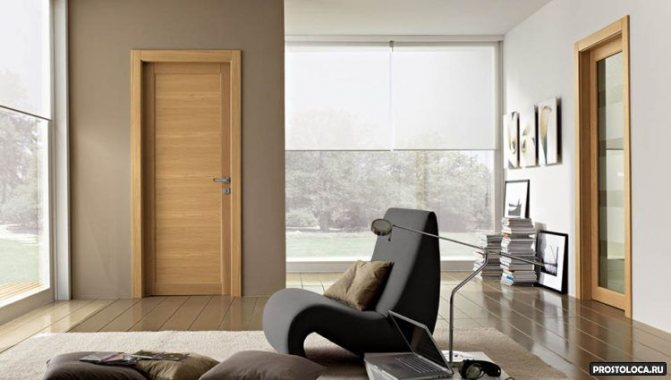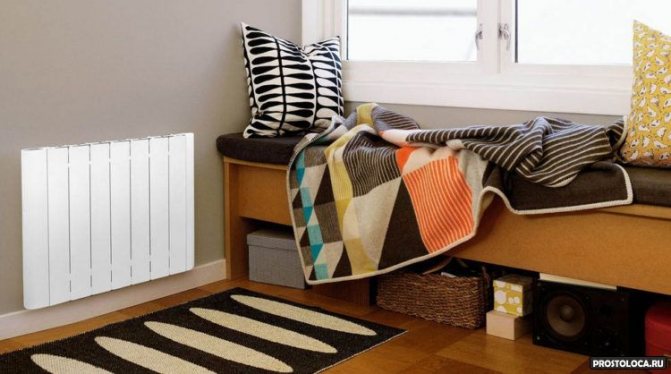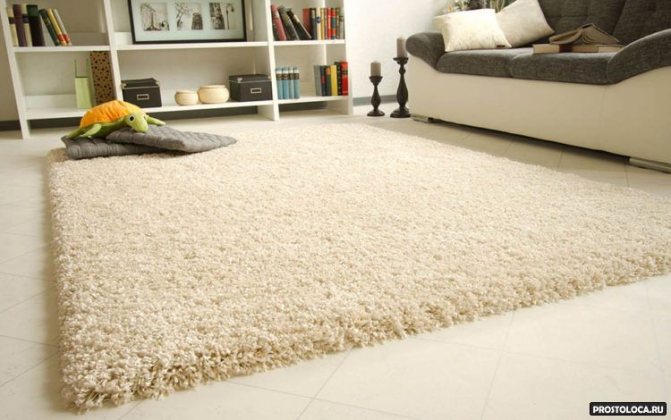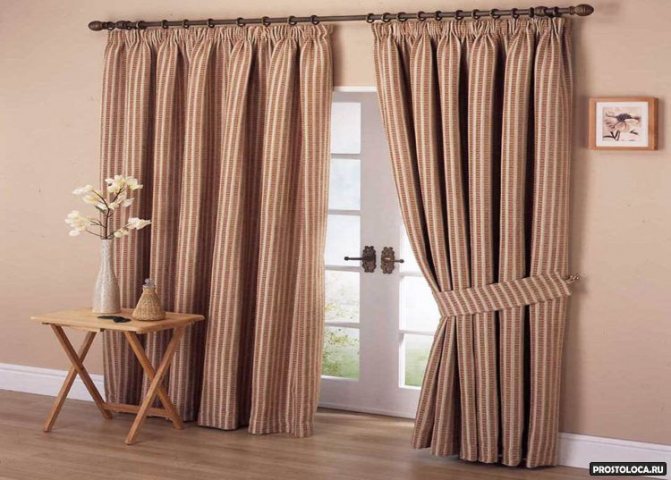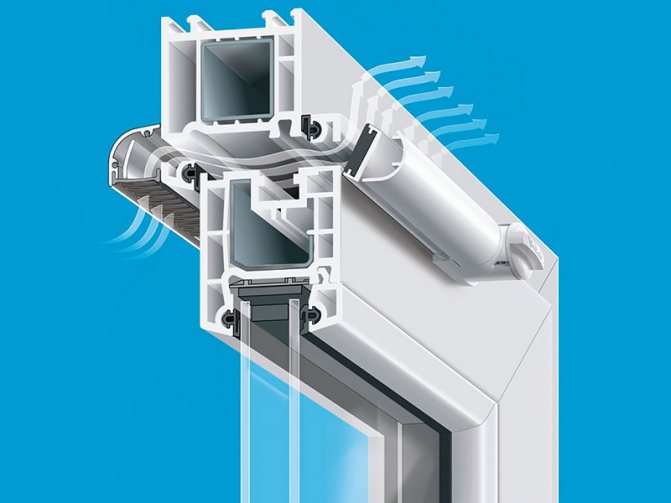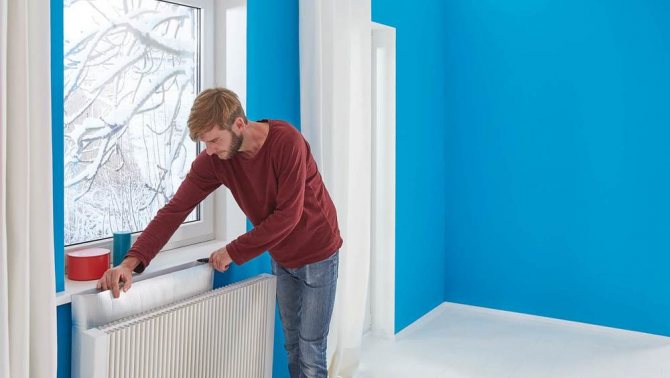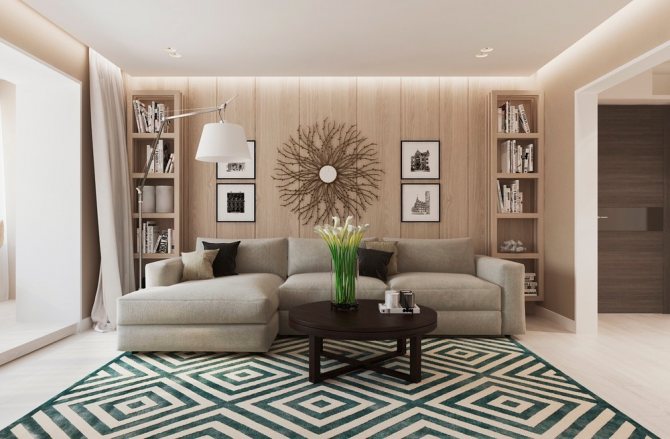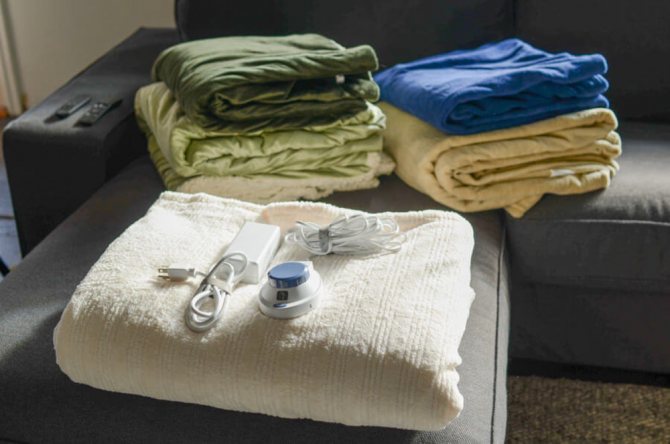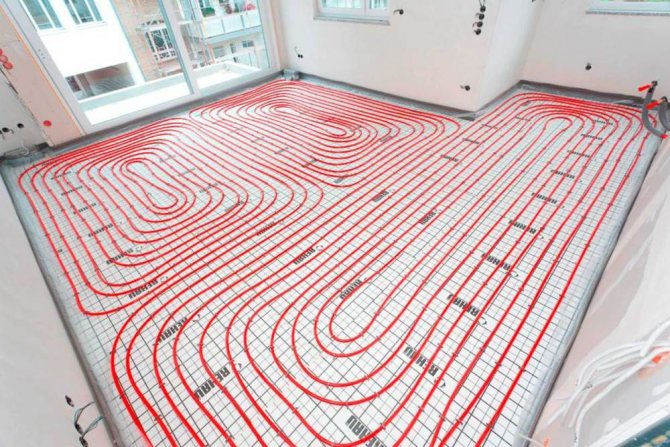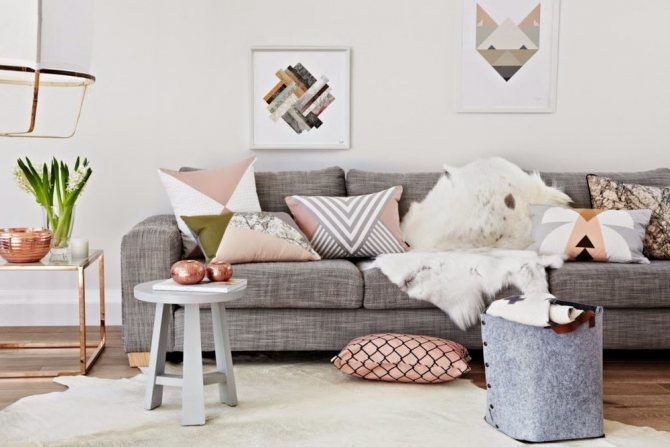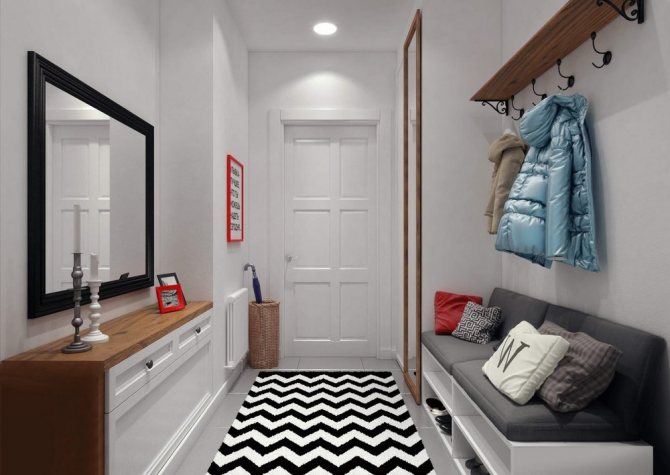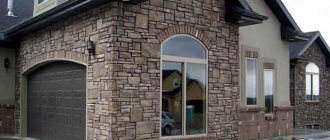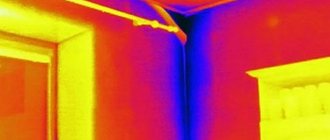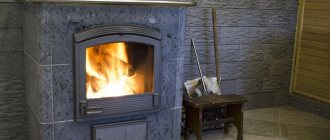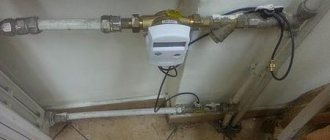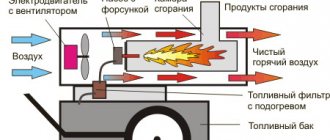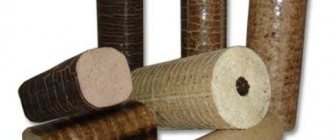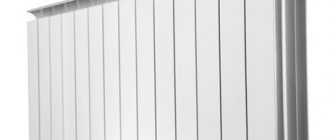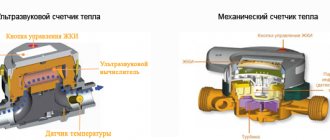Ecology of consumption: The heating season has not yet begun, and is it already noticeably colder in the house? Or maybe the available heaters are simply not enough to heat your home, especially in energy saving mode?
The heating season has not yet begun, but is it already noticeably colder in the house? Or maybe the available heaters are simply not enough to heat your home, especially in energy saving mode? It is not important why you have to chatter your teeth: what matters is that it is time for you to think about how to use heat more rationally.
How warm it will be depends on the house itself and many of its features. You can enjoy the warmth, spending a minimum of the power of heating devices, or you can heat with might and main, and still not know winter evenings without a sweater.
HOW TO MAKE A HOUSE WARMER WITHOUT HEATERS?
- First of all, it is important to insulate the house itself. If you are seriously thinking about saving heat and using it rationally, pay attention to the thickness of the walls of your home. If the wall is 40 cm thick, then it is not surprising that you expect the winter period with horror: you will have to insulate the walls with foam or other material that has a low thermal conductivity. If the house itself becomes a "thermos", then it will not be very hot in the heat, but it will not get cold in winter frosts.
- The next nuance of the house is the windows. Large windows provide plenty of daylight. They are also a colossal source of heat loss. The modern fashion of "glass" houses and floor-to-ceiling windows has its downside: incredible fuel costs for heating such a house. Therefore, it will not be easy to keep warm in the house without insulating windows and eliminating cracks.
If the windows are wooden, then you have 2 ways: rational, but costly, and long, but economical. Following the first path, you once change all windows to metal-plastic at least three-chamber, thereby reducing heat losses several times and eliminating the very concept of drafts. Unnecessary spaces are simply covered with bricks. The second way is the annual red tape with the insulation of windows, plugging them with foam rubber, pasting with a film (by the way, a window curtained on both sides with an ordinary polyethylene garden film keeps heat no worse than metal-plastic. The appearance is not for everybody), curtain them with thick curtains.
- Make the most of outdoor heat and sunlight. During the day, remove from window sills and windows everything that prevents light from entering. In the evening, curtain the windows with shower curtains or film: it will attract sunlight and heat, and at the same time prevent drafts. The doors, by the way, can also be covered with foil: when you enter the house, less cold air will flow there.
- Try to insulate the ceiling of the house, if the house is private: after all, warm air rises up, leaving through the attic. Place Styrofoam or drywall, at worst, an old thick carpet on the floor of your attic.
- Insulate the floor: a carpet on the floor will greatly increase walking comfort.
- Use incandescent bulbs for heating: they generate up to 90% of heat during operation, and only 10% goes to glow. Electricity costs will increase, but without a heater, the house will be warmer.
- Close rooms you are not using. If the house is two-story, it makes sense to heat only the part of the house that you are using, and the largest rooms in terms of area should be closed and curtained altogether.
We keep warm in the apartment
You need to think about keeping the room warm in winter even in summer.Anyone who has already experienced one cold winter will take measures to prevent a similar situation in the future. What can be done before the onset of cold weather:
- peel off all the old paint from the batteries, since each new layer reduces heat transfer by 10%. After all these measures, the radiators can be built up and covered with a layer of new paint, preferably in a dark color;
- install a screen of aluminum foil behind the batteries, which will prevent the wall from heating up unnecessarily and allow the heat energy to be directed into the room. It is very important not to let it remain unclaimed, which means that with the arrival of winter, it is necessary to free up space near the radiator by moving away furniture and other household items, pushing apart the heavy curtains and removing the tulle on the windowsill;
- change old windows for new ones and it is better if they are equipped with 3 glasses and a climate control system;
- cover the balcony or loggia, insulating it.
HOW TO FEEL WARMER IN THE HOUSE WITHOUT A HEATER?
- If it is still very cold outside, you can light a fire in the yard. On it, stones are heated (dense in structure, not building bricks), and they are brought into the house. For some time, the stones will give off heat no worse than the stove.
- Try to stay in small rooms: breathe them faster.
- Light candles, if any. Candles give off some heat.
- Use a hair dryer to dry your hair: use it to warm your laundry and clothes. You can also heat the bed, but manually: the veins are never left covered, otherwise it can catch fire.
- Cook food in the oven. Along with a delicious meal, get a heated kitchen. But dishes, when cooking a lot of steam, it is better not to cook: they increase the humidity in the room.
- Dress in multiple layers of clothing. Oddly enough, the proverb "why do I need your casing if I have 3 bathrobes-ta-ta-ta" makes sense: several light sweaters are warmer than one thick one. Wear slippers and woolen socks: if your feet are warm, it is easier to keep warm. In severe cold, wear a hat: a large percentage of the heat goes through the head.
- Sleep in warm fluffy pajamas: this is the thing!
- Another thing is a warm downy sleeping bag. Hikers successfully use this achievement, and nothing bothers you: it perfectly warms and retains the heat of your body. By the way, you cannot climb into it very warmly dressed: a down sleeping bag reliably stores the heat of your body, which is not released through three sweaters and a jacket.
- Put a heating pad in bed: heat the water and pour it into regular plastic bottles. Such a heating pad will perfectly warm the bed. You can also heat the pillow with rice inside in the microwave: it also keeps warm for a long time.
- Drink hot drinks: Ginger tea is a great way to keep warm.
- Let warm pets into your home. A cat in bed or on hands successfully replaces a heating pad.
- Hug: the coldest evenings are better spent together than alone! published
With the onset of the heating season, many residents of apartment buildings experience serious discomfort and ask themselves the question: why is the apartment cold and how to make the apartment warm
.
There can be many reasons for a cool temperature in a home. This is insufficient heat supply and some kind of construction defects that reduce the tightness of the premises and allow cold air to penetrate from outside.
Local heating systems
The most common solution is to use electric heaters. These are devices such as oil heaters, electric fireplaces or electric convectors. This solution is the simplest, most affordable and cost effective solution.
Special infrared emitters heat only a certain area; the temperature around it is much lower. If lamps, infrared floor mats, heated rugs. Infrared ceiling heaters can be suspended from horizontal cables or pendulum suspension.This allows not only to keep the walls and floor free, but also to significantly expand the heating area due to exposure to horizontal surfaces.
Interestingly, if the temperature of the infrared heater is reduced by a few degrees, the human perceived temperature will remain the same, since this decrease will be compensated for by the "radiation" additive. In this way, energy consumption and heating costs can be reduced compared to traditional heating methods.
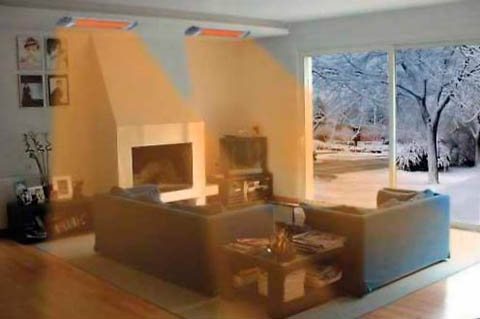
Thermal radiation, like ordinary light, is not absorbed by the air, so all the energy from the infrared heater reaches the heated surfaces and people without loss. At the same time, the average temperature in the room can be 2-3 degrees lower than the optimal one, but due to the direct absorption of energy from the infrared heater, a person in the area of its action will feel comfortable.
Building design, heating system or thermal insulation problems
Very often worn out heating systems are the cause of discomfort. In many socialist buildings, heat is supplied through outdated equipment that has not been repaired or replaced for a long time. In such cases, it is quite difficult to provide a comfortable temperature in a separate room, without the use of additional heat sources or repair work that provides better thermal insulation of the room.
The reason that the tenants are freezing in their apartments is also the poor-quality setting and regulation of the equipment. This may be the case when non-specialists are involved in the maintenance of heat supply systems, or when they are not respected. apartment heating standards
for reasons of economy or other reasons.
In new buildings, it is cold most often when mistakes were made at the design stage of the heat supply of the object or during the production of construction and installation work.
It often happens that there is illegal interference of individuals in the design of heat supply equipment or unauthorized re-equipment of the system in their own interests, without taking into account the interests of other residents of the house living in neighboring apartments.
Residents can spontaneously perform the following actions, which subsequently worsen the heat supply to other apartments:
- Increase the number of radiators
- Expand the heated area (for example, when equipping a warm balcony or loggia),
- Connect additional devices using a common heating system (equip underfloor heating, install heat curtains, etc.).
The reason for the cold can be the low energy efficiency of your apartment building, as well as various violations of construction norms or technologies. Old houses are often characterized by low quality of thermal insulation, and if a building has been without major repairs for a long time, then the thermal insulation becomes unusable and practically ceases to perform its functions.
The materials of the latest generation are used in new houses, they are very durable and resistant to negative climatic influences. If the residents of a new building have a question: why is it cold in the apartment, then the reason may be either a violation of thermal insulation technology or the fact that during construction they simply saved on materials, replacing them with unreliable and outdated ones. As a result, all the heat goes out into the street instead of warming up the tenants of the apartment.
What if your apartment is very cold?
First of all, it is worth checking with your neighbors if they are experiencing the same discomfort or if you are alone in your problem. It is best to study the situation not only in your particular house, but also in neighboring houses, which are supplied with heat by the same management company.If the problem is global, then it will be much easier to solve it together.
If the apartment has cold batteries, then be sure to measure the air temperature in each of the rooms of your living space. It is worth knowing that in accordance with the current standards, the rooms during the heating season should not be lower than 18C, and in the corner living quarters - not lower than + 20C.
After you have made all the measurements, call the dispatch office of your management company, make sure that your complaint is recorded. If the reason why it is cold in your apartment is not known in the housing office, then a heat inspection in the apartment should be assigned with the obligatory drawing up of an act. You should know that if the temperature in your house is below the established norm, then you have the right to demand from the Managing Organization the recalculation of utility bills for heat supply.
How to make an apartment warm
You can correspond with the management company and with the state housing inspectorate, but this will not create warmth in the house. Sometimes it takes years to solve a problem and it is much easier to take care of yourself on your own.
Most often, the cold penetrates into our home through window openings. It is best to install modern plastic windows, if you do not have the funds for such improvements at the moment, then at least insulate your windows, glue the joints with window sealant, cracks in places where the glass adjoins the frame and other cracks into which it seeps cold. Do not forget to also provide the entrance doors and window vents with seals.
It will be more difficult if your walls freeze through, and mold often appears in the corners. This fact suggests that there are voids in the walls and there are serious problems with thermal insulation. In order to fill all the voids, it is necessary to remove the layer of plaster and treat all the cracks with polyurethane foam. This will eliminate cold bridges.
You can also add additional insulation to your apartment. To do this, the floors, ceilings and walls are sheathed with plasterboard, all voids are laid with a layer of mineral wool (this is a reliable and inexpensive modern insulation), then the walls are plastered, and the floors are poured with concrete screed and decorative surface finishing is carried out.
This is a very effective way of how to make warmth in an apartment, which, moreover, will help to solve the issue of soundproofing your living space.
Instructions
You can not wait for the order of the authorities at the beginning of the heating season, but become the master of the situation. To implement this idea, you can install an individual autonomous heating system. True, this still requires a written permission from the city administration, and the equipment itself is not cheap: the autonomous heating system consists of a boiler, radiators, a pump and pipes. But, if you are ready to spend money, then your home will always be warm whenever you want.
Various electric heaters are another possible option. But, the catch here is that it is not cheap these days, and this method of generating heat is also very expensive. In addition, with permanently switched on electric heaters, there is insufficiently high humidity in the room, which is harmful for.
Installation of plastic sealed windows with several double-glazed windows allows you to keep heat in, prevents the outflow of warm air. Good quality sealed entrance doors will also keep the apartment warm.
Another advance is the installation of underfloor heating. The heating system is installed under the floor covering and is either a heating cable with a thermostat or a thin heating mat.
Modern split systems work well for heating, but they can be used only when there are no freezing temperatures outside.They are also convenient in that the intensity of the air flow and the temperature of the supplied air can be set using the remote heating.
Put sheets of special shielded foil behind the heating radiators - this tool will reflect the heat fluxes towards the apartment.
If the heating season has already begun, and your batteries are barely warm or completely cold, you need to look for the reasons for this phenomenon. Perhaps the air locks formed in the radiators are to blame, then, using special keys, it is necessary to bleed the air from the system.
If the apartment has a balcony or loggia, you need to take care of their insulation: for example, glazing. This will prevent cold air from entering the rooms.
Related Videos
The optimum temperature in a living room is 23-25 ° C, this temperature regime allows the human body to act most effectively. If the temperature is below 18-20 ° C, there can be no question of productive work or quality rest.
Instructions
The reasons for the low temperature can be phenomena and processes for which DEZ, housing services, management companies are responsible. If insufficient hot water is supplied to the batteries, general building communications are worn out to a critical limit, thermal insulation standards are violated during the construction of a building, you can safely go to DEZ, who is obliged to send an engineer to check and draw up an act. If your complaints are confirmed, government agencies are required to correct the situation within a week.
In strong winds, cover the doorway of the balcony door with a rug. To be sure, you can put an old pillow on the floor under the door.
Draw up blackout curtains. This is also one of the ways to keep cold air out.
Now there are quite a few different foam or rubber heaters that can be bought in hardware stores. They are very easy to use and keep warm in the apartment.
Related Videos
A rare apartment owner can boast that he always has a comfortable temperature in it. In most cases, many consumers are not satisfied with the temperature regime of the room.
There are many reasons why many people are very cold in their apartment in winter. It is not worth delving into all of them, it is enough to tell how to solve this problem.
To begin with, every component of the room - be it a window, a door or a floor - may not play in favor of a comfortable stay. This happens when it comes to the wrong installation of these structures or the wrong choice of the material used for the arrangement of the apartment.
Experience of European countries
If you have not yet decided how best to heat a private house, ask how they approach this problem in European countries. In many of these countries, the prices for heat transfer fluids are very high. Therefore, they have been looking for methods there for a long time on how to reduce the consumption of gas and electricity when heating premises.
In Finland, they began to build "passive" houses. This type of building allows you to consume a minimum amount of energy from external sources. A little later, such buildings began to appear in Germany. Non-volatile buildings can reduce heating costs.
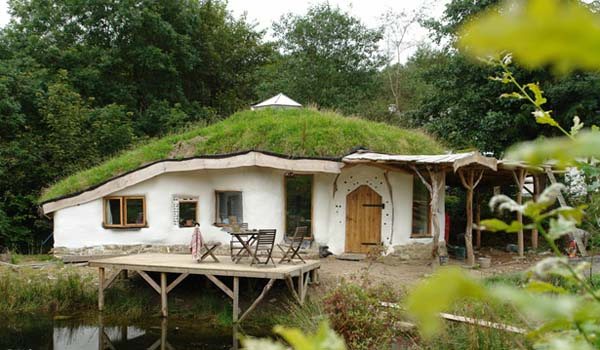

An example of a European non-volatile home.
If the building is located in the south, where there are many sunny days, electricity is obtained from solar panels. In northern countries, the sun cannot provide enough energy. Windmills are being built. The heat of the earth is also often used. Indeed, at a certain depth, even in the winter months, there is a lot of heat.
A system of heat exchangers is arranged in the ground. Ground air and heat pumps are used. During the winter months, the water is heated by the heat of the earth. It must be said that such a system requires large installation costs and pays off in several decades.If you really decide on such an experiment, then it is imperative to insulate all structures of the house, starting with the walls of the foundation and ending with the ceiling and roof of the building.
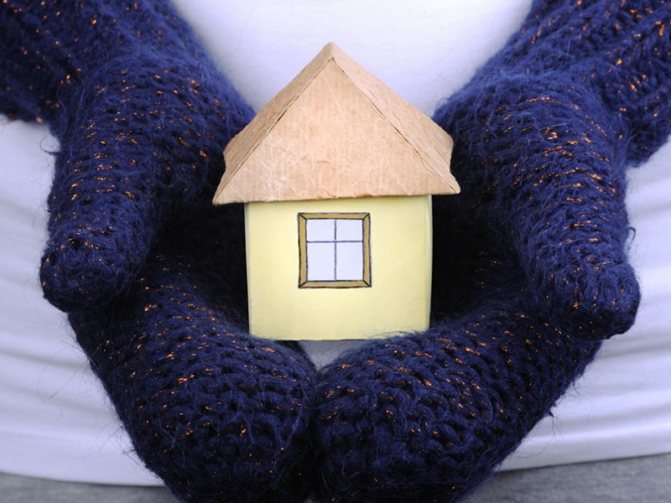

Winter is one of the most beautiful times of the year. Winter is notable for its wonderful natural beauty, harmony, and most importantly, winter is the most fabulous time of the year, when all the most intimate and desired dreams come true as if by magic. Any person associates winter with sparkling snow, frost, red cheeks, sledding or skiing, and of course, with the New Year holidays. But nothing can darken the holidays like celebrating the New Year in a cold dank apartment or house. And in general, who will be pleasant and comfortable after a long work or school day to come to a cold apartment or house. But why doesn't your shelter keep warm anymore? What happened to your cozy and lovely apartment or house? Why does the heat go away and how to get it back? How to keep the house warm in winter? We will try to answer all these questions in this article.
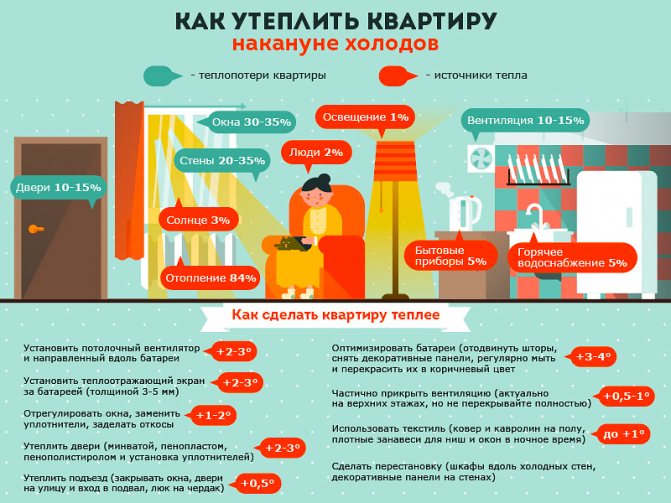

The main sources of heat loss in an apartment are: doors (10-15%), windows (30-35%), walls (20-35%) and ventilation (10-15%). But first, you need to understand one simple point that most old buildings have such large heat losses in winter for one simple reason - they are already old and were built using outdated technologies. Now, the majority of modern houses are being built according to modern projects and from innovative heat-saving materials. But even the most modern buildings are not devoid of heat loss. No, there are certainly an order of magnitude less of them, but such a phenomenon is a place to be, which in turn entails additional heating costs.
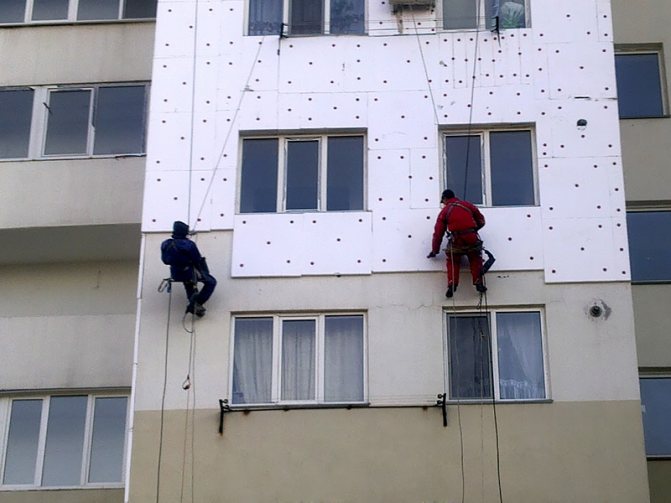

Let's go back to the main sources of heat loss, namely, to the walls. The fact is that insulating walls is a very time-consuming and costly process, but it justifies all the money spent on it. This process consists in insulating the exterior facade of the house with polystyrene foam. Such services are provided by specialized companies, and they carry out it efficiently and in the shortest possible time. And then what to do with the walls in the room-room? It's very simple, just hang the carpet on the wall or lay it on the floor. Also, it will not be superfluous to peel off and re-paint your old cast-iron radiator batteries in a dark color, or in general they can be replaced with modern steel or bimetallic ones. After all, perennial paint layers, paradoxically, contribute to the worst heat transfer. Another touch for your batteries is to place a heat-reflecting shield behind them. You can buy this heat-reflecting shield-screen in any hardware store or on the construction market. And most importantly, try not to hang or force your radiator batteries with blackout curtains or objects.
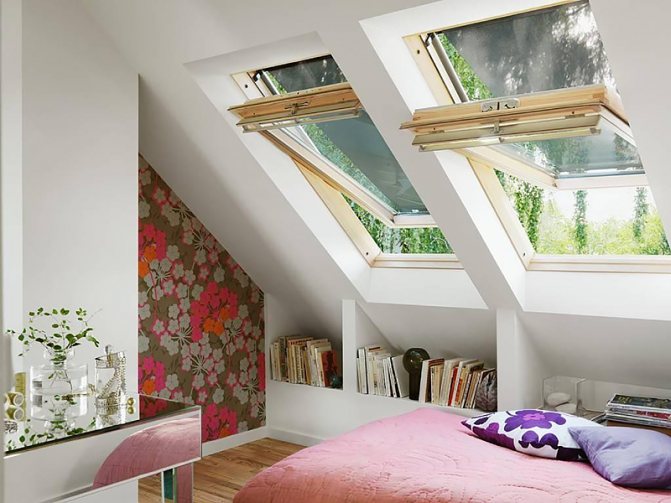

The next source of heat loss on our list is windows. Windows are not only a source of light and heat, but windows also cause rapid heat loss. The thing is that old windows simply do not keep heat in an apartment or house, and the heat simply evaporates through the cracks that have appeared over the years. There are only two solutions to this problem: replace the windows and repair the old ones. If your financial capabilities allow you to replace the windows with new ones, then it is worth stopping at this solution. If finances are limited, then in this case it is recommended to carry out the prevention of your windows. Prevention consists in replacing all old seals with new ones. This will allow the sash to press more tightly against the frame and thereby minimize cracks and, as a result, heat loss. Also, it is worth choosing the right sill so that it overlaps the radiator heating battery by 50%, thereby forming a so-called thermal curtain.And finally, curtain the windows with a thick night curtain at night. In a postscript, I would like to run a little over another useful device for windows - this is window automation. It is, of course, more useful for country houses with dormers, since it is very difficult to reach them without stairs. And it is not always convenient to close them later after opening them for airing. And in turn, warm air leaves directly through the upward, since it is much lighter than cold air. To avoid this, it is precisely the drives for the windows that are needed. offers high quality Italian electric window drives. The full range of window automation can be found in the corresponding section on our website.
Priority of actions
To eliminate the cold in the apartment, it is better to start with the windows. They should be checked for any gaps. If you find any, you need to use foam strips, which will allow you to inexpensively and quickly solve the problem. In addition, you can choose other types of seals, fortunately - today there are more than enough of them.
In addition, insulating film for window structures can be used as a heater. Although this option can only be used when the owner is not particularly concerned about the transparency of the glass.
To insulate the door structure, you can also use a special seal around the perimeter, which is placed directly between the frame and the door itself. In addition, the insulation of the product by covering the surface of the door leaf will help to solve this issue.
In the case when metal doors are installed, moreover, the inside of the product is not filled with anything, then it is advisable to fill the empty space with insulation.
Having solved the issue of insulating doors and windows, you can start analyzing the flooring.
Floor insulation
If the floor is in excellent condition, there are no defects and cracks, and the cold still prevails below, then the best solution would be to use carpets for the winter, preferably natural ones, since the used wool retains heat in the house in the best way and does not allow the cold air flow to move through him to the living quarters. Although there is another option - installing a warm floor.
There is another simple, but at the same time effective way to insulate an apartment - this is cooking. Indeed, during the cooking process, the air in the kitchen heats up and disperses through the living rooms, which also allows them to maintain a comfortable temperature regime. Whichever of these methods the homeowner chooses, they are all effective, so you can safely use them to solve this problem.
Unfortunately, every year the problem of sufficiently low temperatures in the cold season becomes more and more urgent. In winter, many townspeople wear warm sweaters and woolen socks at home, and when getting ready to go to bed, wear warm flannel pajamas and cover themselves with two blankets. If you are familiar with this problem, then you have probably repeatedly asked the question: what can be done to make the house warmer?
Insulate the walls of the building
Before discussing heating options for a private building, it should be noted that a lot of heat is wasted. You burn gas, use electricity, heat water. And the heat escapes through the walls and roof. Don't believe me? Walk along a private sector street in winter. Has the snow melted on the roofs of many houses? Why?
The heated air becomes lighter and rises upward. If the ceiling and roof are not insulated, heat penetrates outside, melts the snow on the roof, heats the air around the building. The heat in the house does not linger and you have to constantly turn on the gas burner. And the walls of the foundation conduct cold and moisture. The room is constantly damp and cold.
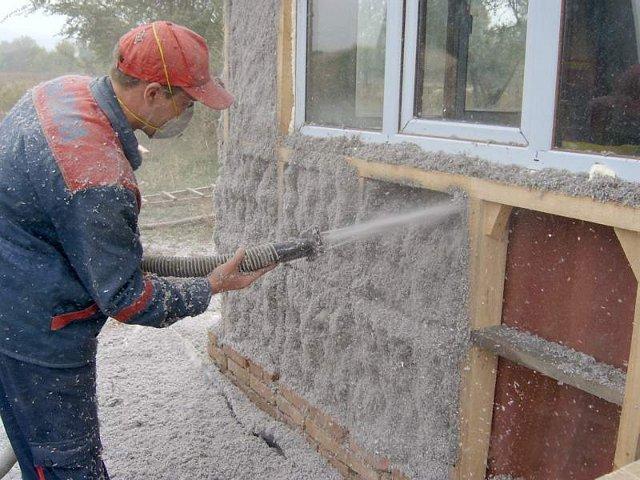

Scientists have calculated that half of the household heat goes outside through the structure of the building.It will not be possible to insulate the building 100 percent. After all, the house must breathe. However, insulation work may well reduce heat loss by half.
There are many options for insulation. For example, you can pump liquid foam insulation by drilling holes between rows of brickwork. You can insulate the outer walls with foam or mineral wool. A layer of expanded clay can be poured onto the ceiling.
The choice of materials for insulation is also constantly increasing. Styrofoam and rock wool are cheap. However, other materials can be used, such as glass wool or polyurethane foam. In some cases, straw, hay, sawdust are used as insulation.
Who should you complain to if the apartment is cold in winter?
Most often, the reason for the fact that in the cold season the temperature in the room drops to a critically low level, there is a combination of several common factors. This is an incorrectly designed heat supply system, natural wear and tear of communications, gross errors in the installation of a heat supply system, or an illiterate operation of this system. How to find out the reason why it is cold at home?
First of all, you should write a statement in DEZ, in which you urge you to take measurements of the air temperature in yours. A caretaker technician will pay you a visit at a predetermined time, and a report will be drawn up based on the results of this visit. If the temperature is really below normal, then in the shortest possible time the utilities are obliged to take measures to rectify the situation.
If you are sure that the problem of low temperatures in the house is due to the dilapidation of the radiators installed in your apartment, then you had better replace them. Ideally, this should be done before the onset of the heating season. If, when replacing radiators, you install thermostats on the supply pipeline, you will be able to independently set the desired temperature in the room. Perhaps you should consider increasing the number of sections in radiators.
How to reduce heat loss
You can improve the situation in your apartment with the help of a good repair: put high-quality windows and doors, insulate the walls from the outside with foam, replace the cast-iron radiators with modern ones, and, finally, glaze the loggia.
But if the house is in good condition, repairs have been made, but the temperature in the room is low, then you should look for hidden heat loss. A home survey with a thermal imager can show all the places where heat is escaping. But on your own it is worth carefully inspecting and exploring all the places where heat most often leaves.
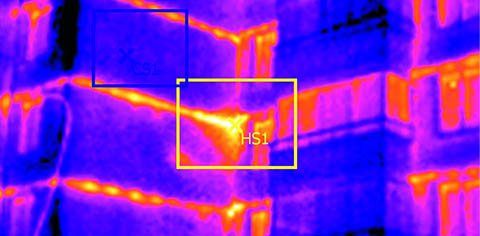

- Windows and window sills... Often there are gaps in the windows that appear due to: wear of the sealing gum, poor-quality installation of the window. Often, the cracks under the windowsills, left by unscrupulous builders, are a source of drafts. If the window sills are constantly cold, condensation appears on the windows - the heat escapes through such windows.
- Entrance doors. Doors are often the source of problems. Their seal wears out, cracks appear through which cold air constantly enters the room. Installation of a double door will help. Ordinary interior doors, even the cheapest ones, significantly reduce heat loss. This is especially noticeable in private homes.
- Balconies and loggias. Cracks appear in the balcony doors. They must be checked before the start of the heating season. The glazing of the loggia will make the apartment warmer by a few degrees.
- Radiators heat the outer wall. Usually radiators are installed under the window, close to the outer wall. It heats up the wall a lot. As a result, some of the heat generated by it goes to the street. In fact, the heat is used to heat the street. It is recommended to glue the wall behind the battery with foil, then not the wall will heat up, but the apartment where the heat will go.
- Cold bridges. Cold bridges are areas of a building with a lower thermal resistance in relation to other areas.That is, they let in more heat. For example, these are corners, concrete lintels over windows, junctions of building structures, steel reinforcement in the walls, and so on. It is difficult to find them without a thermal imager. If dampness is found in any corner, condensation appears - this is a dangerous area.
- Ventilation holes... They must be in the kitchen to remove combustion gases. But ventilation often works "the other way around". Instead of removing air from the room to the outside, cold outdoor air is drawn from the street into the room. Installation of a hood above a plate with a corrugated pipe for air will help.
What if the batteries are hot but it's still cold at home?
Nothing promotes heat leakage like old windows with cracks and gaps in their frames. Replace them with modern double-glazed windows, and perhaps this alone will be enough to make your home warm and cozy. To partially solve the problem will help and "gluing" the windows for the winter. If you insulate the walls during the repair - with plasterboard, under which are fixed plates of mineral wool or any other insulation - the temperature in the apartment will become noticeably higher.
If you install a "warm floor" system, even if only in the kitchen, in the hallway and in the bathroom, the house will become warmer anyway, and the excess moisture that inevitably appears in these rooms will evaporate faster.
Sources:
- What to do if the apartment is cold in winter
What to do if the central heating system of the apartment cannot cope with the winter cold? Save heat or buy extra heaters
Photo: Depositphotos / alexraths
In winter, apartment heating does not always cope with the cold, and the room thermometer drops to 14-15 ° C heat. This may be due to the remoteness of the house from the boiler room, weak heating of the coolant, improper wiring of heating pipes or large heat losses through walls, floors and windows. Letters to the authorities and administrative methods of settlement are unlikely to lead to a positive result in the same heating season. The most that they can offer you is to recalculate the amount of payments downward.
How to make an apartment warm, no one bothers except ourselves. The editorial board of RBC Real Estate studied the issue closely and found several solutions that could warm an apartment in winter.
Mobile heat
The easiest and fastest way is to buy a mobile heater: infrared, fan heater, oil cooler or convector. The first two types locally heat the air near the bed or near the balcony, but they do not help central heating very well. The latter evenly heat the room like conventional batteries. The convector makes it faster, and the oil cooler will take time to reach the set power. Obviously, none of these electrical appliances are economical. With a relatively low initial price of equipment (from 1000 rubles and above), 1-2 kW will flow away every hour. And the power of the in-house electrical network for the simultaneous operation of an electric kettle, a heater and a washing machine may not be enough.
The most practical are fan heaters with ceramic heating elements and a low-noise tangential fan. Vertical floor models automatically rotate to circulate warm air throughout the room and are equipped with a control panel. Timberk TFH T20 FSN.PQ
The Noirot electric convector creates a powerful flow of warm air due to the height of the hollow body. It can be placed on the wall or on casters sold separately
Dyson, known for its innovative vacuum cleaners and fans, has released the AM05 with air heating. Its main advantage is the creation of a strong flow and the absence of open heaters, although, in our opinion, dust should still be drawn into the device case. The price exceeds traditional models by 4-5 times
The most beautiful heater from an interior point of view will be an electric fireplace. In addition to a pleasant glow, it emits 2-4 kW of heat
Small biofuel fireplaces generate a lot of heat and burn the air without emitting soot. Outlet only water vapor and C02
Heat from the air
Some split systems (air conditioners with indoor and outdoor units) are able to cool the air in summer and heat it in the off-season and winter due to the heat pump principle. In a hot season, excess heat is discharged into the street, in a cold season, any amount of heat is taken from the atmosphere, that is, the outdoor and indoor units change roles. Thus, reversible air conditioners can supply warm air even at subzero temperatures outside the window. Due to the fact that there are no heating elements in the device, it consumes three to four times less energy. For one consumed kilowatt of the split system, 3-4 kW of heat are emitted.
Passive heat
According to experts, 25% of the heat goes through the windows, so you should pay attention to their condition. Old wooden structures do little to retain heat, and the fittings of plastic frames loosen over time, as a result of which the tightness is broken. In any case, it is worth installing modern heat-saving windows with increased heat transfer resistance, at least 0.55 1 sq. m * C / W.
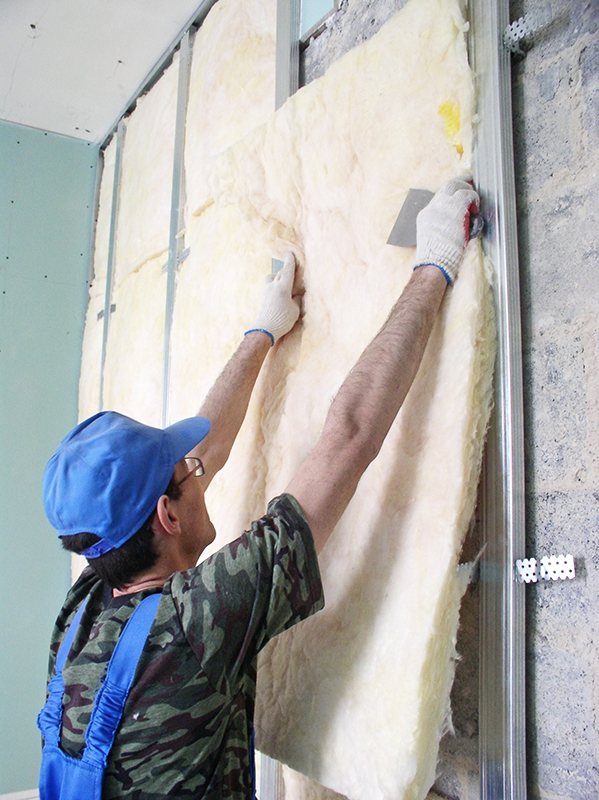

Glazing of a balcony, even without insulation, will improve thermal insulation by 15-20%. It is especially worth paying attention to the finishing of the window slopes. Sometimes it is not enough just to align and paint them, but serious insulation with expanded polystyrene or mineral wool is required, followed by plastering or plasterboard finishing. There are also ready-made panels on sale.
Corner exterior walls on the north side of the house do not add warmth, especially in older panel houses. It is good if you plan to insulate all the walls from the outside, but not everywhere there will be major repairs. If you insulate the walls from the inside, the volume of the room will decrease, but it will become much warmer.
Warm floor
In the process of renovating an apartment, you should not neglect the installation of electric underfloor heating. As a reminder, it is prohibited to use water systems in apartments. A special heating cable is laid in the screed or directly in the adhesive when replacing the tiles. Film floors are generally mounted under parquet boards, laminate or linoleum using dry technology. Such additional heating is the most pleasant for a person. Heat rises gently from the floor across the entire surface. Due to the low temperature (24-25 ° C), there is no excessive overheating and drying out of the air.
Apartment design is a creative, interesting, educational process. When decorating rooms, you need not only to choose the right building and finishing materials in terms of quality, but also pay attention to aesthetic characteristics. When equipping a room, it is necessary to choose the right color scheme depending on the size, function of the room, the proportions of the walls, ceiling, and personal preferences.
All colors are conventionally divided by temperature. The correct selection of colors, their combinations allows you to achieve amazing optical effects - to enlarge, reduce the room, raise or lower the ceiling, make the climate of the room warmer, more comfortable, or vice versa more ascetic. How to correctly combine warm and cold colors, a table for combining shades, the basic rules of arrangement and optical tricks are discussed in this article.
Simplified insulation methods
Of course, when we are faced with the question of how to warm a room, all parameters must be taken into account: dimensions of the room, heat losses, heating system, ceiling height, etc. Based on this and financial capabilities, you can choose the best option for yourself.
But if you do not have the opportunity to approach the issue radically, there are always old effective "grandmothers" methods:
- it is necessary to carefully insulate windows and balcony doors, especially if you are the owner of old wooden frames. This is very important, since the currents of cold air will constantly penetrate the room, no matter how you insulate it from the inside. To do this, you need to purchase cotton wool, foam rubber, synthetic winterizer or special putty in the store;
- if the room is constantly cold, it will be advisable to insulate the walls either outside or inside. This requires certain material costs;
- hang heavy curtains in a dark shade and keep them open during the day and let in as much sunlight as possible, and close them tightly in the evening. Thick fabric will prevent cold air from entering;
- insulate floors or lay thick, fleecy carpets;
- turn on the incandescent bulbs. An ordinary light bulb transfers 95% of its energy in the form of heat;
- close unused rooms, this will reduce the area of the room that needs to be heated and create another barrier to the penetration of cold air into the room.
Based on all of the above, we can conclude that there are many options for heating a room. Everyone chooses for himself the most acceptable in terms of price and quality.
Apartment design is a creative, interesting, educational process. When decorating rooms, you need not only to choose the right building and finishing materials in terms of quality, but also pay attention to aesthetic characteristics. When equipping a room, it is necessary to choose the right color scheme depending on the size, function of the room, the proportions of the walls, ceiling, and personal preferences.
All colors are conventionally divided by temperature. The correct selection of colors, their combinations allows you to achieve amazing optical effects - to enlarge, reduce the room, raise or lower the ceiling, make the climate of the room warmer, more comfortable, or vice versa more ascetic. How to correctly combine warm and cold colors, a table for combining shades, the basic rules of arrangement and optical tricks are discussed in this article.
What is a color chart?
A color chart is a traditional diagram showing the relationship of colors and shades to each other. Thanks to her, even a non-professional in the use of colors can easily recognize the principles of color combination, choosing the ideal shades, contrasting colors. The table is an indispensable tool for mixing paints, coordinating the correct pigments, selecting tones and includes:
- primary and composite colors;
- chromatic (red, orange, yellow, green, blue, blue, violet, their shades) and achromatic (white, black, shades of gray).
The color wheel includes three primary colors:
- yellow,
- red,
- blue.
Additional colors have been added to the main colors:
- Orange,
- purple,
- green.
What are cold and warm colors? Warm tones are on the left side of the color wheel, cool tones are on the right.
Matching colors correctly in relation to each other (according to the descriptions posted on the wheel) will answer key questions: how to get the perfect color, how to combine shades, which colors match each other and what contrast is best? Understanding the principles of colorimetry has a huge impact on professional design and color reproduction.
What the table gives:
- understanding the nature of flowers;
- acquaintance with the principles of combining shades;
- how to distinguish between warm and cold colors, basic and composite;
- training in the use of shades.
Cold and warm color chart
Warm colors
The color scheme influences the mood. Before decorating, it's worth exploring.
Why are warm colors popular? Warm colors in the interior make visitors want to stay. Surrounded by warm colors, it is comfortable to relax, it is pleasant to spend evenings with loved ones, to eat, to create.Interior temperatures can range from mild, delicate beige, brown tones to hot orange-red geysers.
Warm colors have the following effects:
- stimulate;
- make the room more comfortable;
- add optimism;
- poisonous tones are sometimes considered aggressive.
Which palette to choose? How to choose a combination of warm colors? Below is our mini guide to the "warm side" of color.
Cozy ecru
Ecru is a combination of white with shades of yellow and gray. It is a natural shade of linen, cotton, sand, beige, cream and creamy white. Ecru reflects light gently but effectively. Easy to match thanks to the neutral tone. Surrounded by ecru tones, it is difficult to ignite the senses, they are relaxing.
Ecru excels in:
- living room,
- bedroom,
- bathroom,
- kitchen.
Earth colors
The palette of earth colors includes:
- brown,
- beige,
- olive,
- grey,
- yellowish green.
They are tinted, unobtrusive, elegant, natural, and exude a pleasant, safe warmth. Such an environment will help you relax, escape from everyday worries.
- living room,
- bedroom,
- bathroom,
- kitchen.
It is also fairly easy to pick up. Brown resembles natural wood, due to which it harmoniously combines with most colors, it is included in many combinations.
Sunny interior
Yellow color will give the interior a dose of positive energy. There are many different shades of yellow:
- citric,
- honey,
- mustard,
- pineapple,
- oil,
- linen,
- amber,
- gold.
The combination of yellow shades forms an interesting composition. White ecru with warm tones and delicate gray color perfectly complements it.
The effect of yellow is positive:
- stimulates creativity;
- encourages action;
- creates coziness;
- adds optimism;
- solves problems with lack of motivation.
Orange stimulates fun, symbolizes fire. Fire is a home symbol of hearth, warmth, comfort. The combination of orange, brick terracotta and rust works in rooms where they spend leisure time with family and loved ones.
Orange is especially suitable for:
Dark red, scarlet, ruby, burgundy - juicy shades of love, passion. Red is the hottest of all colors.
The effect of red is as follows:
- increases blood pressure;
- heats the atmosphere, ignites the fire;
- used to decorate romantic meetings;
- stimulates appetite, recommended for eating;
- adds zest to the atmosphere.
Warm colors will help create a cozy atmosphere and feel comfortable. Shades, far from the hottest reds, are safe, bring calming, relaxation and rest. The closer to the opposite end of the scale, the hotter the shades, the more stimulating they are. Therefore, using yellow, orange, red, it is worth combining them with cold tones, observing moderation. The right combination of cold and warm colors will help to avoid cacophony, temperature congestion in rooms. An interior that is too hot starts to annoy, and an interior that is too cold will bring sadness and despondency.
It is worth remembering that some warm shades become cold if the following impurities of cold tones are present in them:
- green,
- purple,
- blue,
- grey.
Cool colors
Cool tones on the color wheel start with shades of green (mint, emerald green), as well as shades of blue and purple. Why is the cool shade often used?
Cool colors affect as follows:
- soothe;
- relax;
- make the room visually larger, optically expand the space of small rooms;
- help to concentrate, recommended for study rooms, classrooms;
- those wishing to lose weight should remember that the blue color suppresses appetite (it is not used in restaurants, cafes, canteens).
Cool shades are used in all rooms.
How to decorate a cold interior? Below are some interesting ideas on how to choose the right, harmonious combination of cool tones.
Purple living room
Purple walls, furniture, living room decorations will help you relax after a busy day. Purple looks especially beautiful paired with gray. The violet-gray combination is beautiful, relaxing, elegant.
Using silver accessories with a touch of black will make the room look glamorous. The use of architectural concrete will create an atmosphere in, give the room a modern gloss, notes of minimalism.
Blue bedroom
The bedroom, decorated with blue and its shades, is suitable for people who have difficulty falling asleep, relaxing after a hard day at work, stressful situations. You can bet on the following combinations:
- pastel blues paired with crisp grays and whites;
- dark blue and white;
- dark blue and light blue.
The blue bedroom will be a place where it is good to rest, to gain strength in the process of healthy, restorative sleep. Just do not use a computer, tablet, smartphone in the bedroom, which interferes with the relaxation process. The blue light emitted by electronic devices interferes with the production of melatonin, the sleep hormone. It is advisable to leave the work in the office.
Cool green - for a teenager's room, office
Cool green is recommended for people working on a computer - it will help the eyes to rest. Green is ideal where work is stressful. The cool green colors in the palette below are shown on the left.
In the children's room, mint, pastel green shades come in handy. They look harmonious in the company:
- bleached blue (boy version),
- cool pink, purple (girls version).
Look great on a green background:
- white furniture,
- turquoise accessories,
- gray furniture, accessories,
- pastels.
In a green room it is easier for a child to relax and fall asleep. Optimistic green helps children to create, learn, develop, and stimulates mental activity. Depending on the size of the rooms, choose a shade of green, using light colors to decorate small rooms.
Marine climate in the bathroom
The bathroom design in blue gives a feeling of freshness. Blue looks especially harmonious in retro style, shabby chic. Stylish furniture looks beautiful with blue walls and white fixtures.
Adding elements related to coastal climate, beach, sea, will make the room look like a seaside. The modern interior will be made warmer by wooden elements, houseplants.
The correct use of colors will help to achieve interesting effects, will have a positive effect on mood, activity, help to rest, relax or, on the contrary, recharge.

